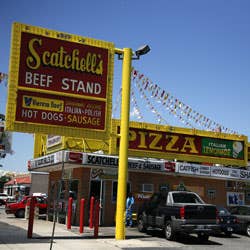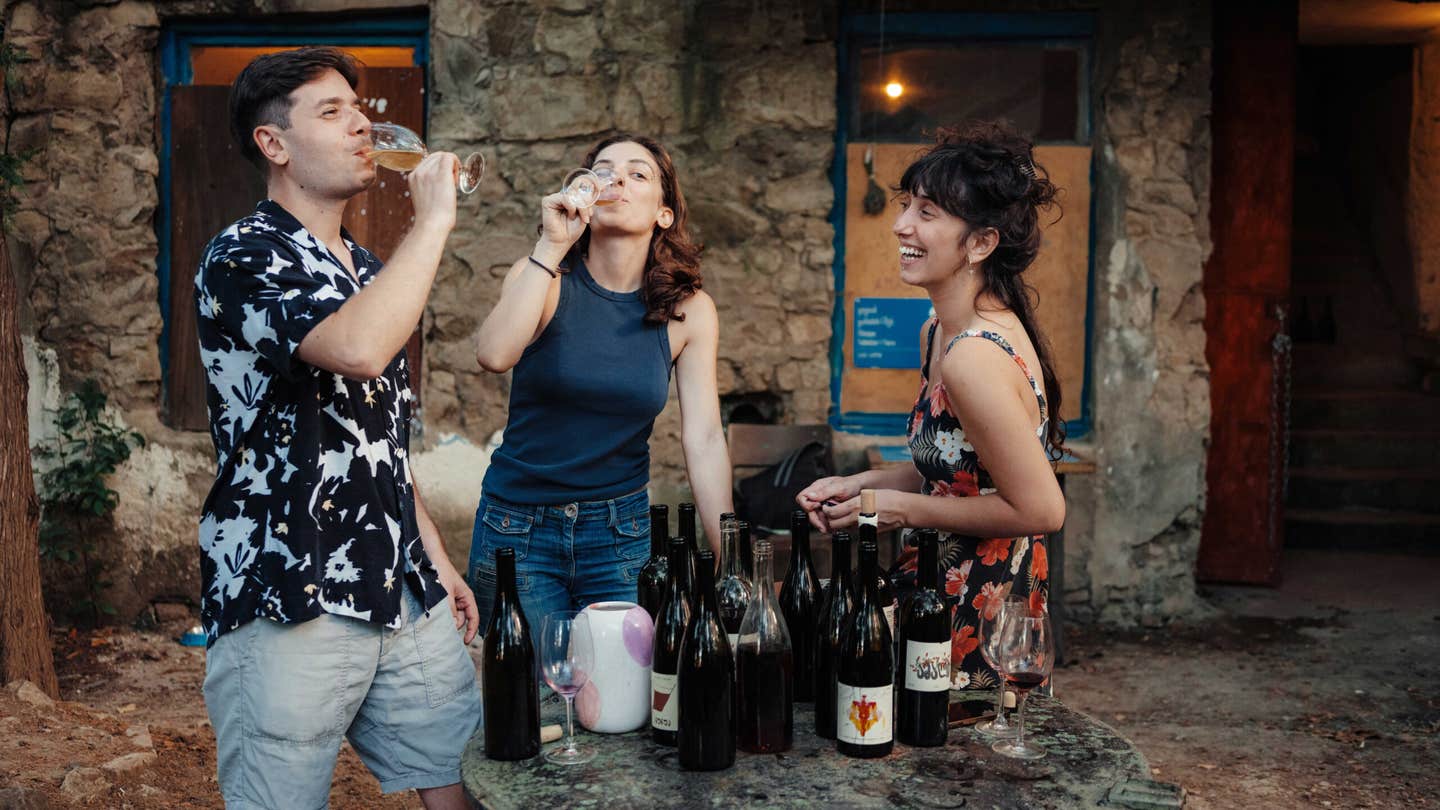
Heartland of the World
It is safe to say that the writer Nelson Algren, were he alive today, would scarcely recognize the town he called a "drafty hustler's junction", for if the Chicago of Algren's mid-20th-century heyday was a collection of hard-bitten neighborhoods ruled by parochial tastes, the present-day city is inarguably a world-class metropolis. This former stockyard town that rose from swampland between the prairie and the inland sea of Lake Michigan has shed its unglamorous reputation and come of age. And nowhere is its transformation more pronounced than in the realm of food. Over the past few years, Chicago has become a magnet for avant-garde chefs and is now home to temples of innovative cuisine—the celebrated restaurants Alinea, Moto, and Schwa among them—that have earned a level of culinary cachet previously seen only in New York, Paris, or London. But the city's kinetic food culture amounts to more than a restaurant revolution; in fact, it has less to do with the city's clout as a gastronomic destination than it does with the increasingly varied backgrounds and appetites of the people who live there.
And yet, beneath these new layers of identity still lives Algren's gritty streetscape of Greek diners, Italian beef stands, and Irish taverns—legacies of early waves of immigration. That these old standbys continue to thrive alongside the city's three-figure tasting menus points both to Chicagoans' cosmopolitanism and, more important, to their unpretentiousness. As Alex Kotlowitz writes in Never a City So Real, a 2004 collection of essays about the city, "People [here] are taken for who they are, not for what they have or haven't achieved."
I was born and raised in Chicago, and my return visits to family there have usually centered around meals at favorite childhood haunts like the venerable Berghoff restaurant and the chophouses popular with my parents' generation. So, when I recently went back to explore Chicago, it appeared to me a place reborn: warmly familiar and ever welcoming, but as diverse and audacious as any city I've known.
If Chicago is, as the writer and documentarian Studs Terkel wrote, "America's dream, writ large", then the Super H Mart, in the near-north suburb of Niles, is the incarnation of that theory. I'd decided to start my Chicago journey in the northern reaches of the city, and I'd heard from a friend that this massive, spanking-new supermarket, located in a nondescript commercial strip of big-box stores and chain restaurants, had to be seen to be believed.
The immaculately clean, high-ceilinged Super H Mart (which is owned by the HanAhReum Group, a company based in New York) was a city unto itself. It took me the better part of an hour to gawk my way through the produce section alone: a mound of bitter melons sat near neatly stacked romaine lettuces; nubs of fresh turmeric vied for space with blushingly ripe tomatoes. The meat counter, tended with brisk efficiency by uniformed workers, was flanked by vast refrigerated cases containing presliced rib-eye steaks (for Korean bulgogi), oxtail, pigs' feet, beef knuckle, frozen whole duck and pheasant, and more. The shoppers at the Super H Mart appeared to be mostly people of Korean and Chinese descent, but I also saw whites, blacks, and South Asians pushing their carts through the aisles, trailing toddlers and spouses as they plucked items off the shelves, which groaned with a staggering variety of goods, from Oscar Mayer Lunchables to dried bracken fern and lily flower. The megamart ambience and piped-in pop music were pure Americana, but the food was all over the map.
A ten-minute drive south and east took me to West Devon Avenue, a principal artery for several neighborhoods in Chicago's northern tier. The two- and three-story brick and masonry buildings that stretch east along the street toward Lake Michigan constitute Chicago's densest concentration of international shops and restaurants—a thoroughfare that plunges through one ethnic turf after another: eastern Europe, the Caucasus, Russia, Central Asia, India, and on and on. At the 3 Sisters Russian delicatessen, just down the street from the New York Kosher grocery and catercorner from the Croatian Cultural Center, I scrutinized handwritten signs in Cyrillic hanging above cold cases of smoked herring. One block east, just past an Afghan kebab house, the Argo Georgian bakery served me a flaky cheese pastry called khachapuri. Down the street at Sukhadia's, an Indian sweets shop that has branches in New York and New Jersey, I stood before a giant menu board that offered dozens upon dozens of cakes, shakes, and savory snacks. The colorful, neat decor and uniformed counter staff evoked Baskin-Robbins, but the menu was uncompromisingly authentic. I ordered a channa poori, an onion-and-tomato chickpea curry served with a fried flatbread; the flatbread was feather light, and the chickpeas were exuberantly flavored with ginger and garam masala.
As I made my way south from Devon Avenue to Bucktown, the neighborhood where I planned to have dinner that night, it occurred to me that nearly everyone I talked to in Chicago—shopkeepers, friends, aunts, uncles—seemed to be a font of shopping and eating recommendations: a great Vietnamese butcher in Uptown, say, or a trick for getting a reservation at Moto, chef Homaro Cantu's modernesque marvel of a restaurant. It caused me to reflect anew on how much the city had changed.
To say that Chicago hasn't always been the dining mecca it is today would be understating the truth. During the corruption-fraught reign of the late and much memorialized Richard J. Daley, who ruled city hall from 1955 to 1976 and was the father of the city's current mayor, Chicago's restaurant scene was limited largely to coffee shops, steak houses, private clubs, and a few fancy French and Italian places. Today, by contrast, a variegated restaurant culture thrives in the city. This renaissance has generated its share of hype, but I saw little of that in evidence at Scylla, the restaurant, tucked into a brick town house, that a friend had suggested for dinner. True, the wordy menu descriptions aroused suspicion: the entree I ordered, for instance, was a grilled lamb sirloin with new-potato cake, artichoke jus, strawberry compote, and a caper vinaigrette. But when it arrived, my suspicion evaporated: all the elements were harmoniously realized, with no single ingredient overpowering the others.
Over drinks the following evening at a North Side tavern, I asked Meade Crampton, a cousin of mine who, like many Chicagoans these days, always seems to have food on the brain, whether she and her friends even bothered to eat hot dogs in this town anymore, given the immense range of options now at hand. "All the time," she said. "Usually, if we really want to go old-school, we head south."
Most of the city's vast South Side—a sprawling patchwork of mostly working- and middle-class neighborhoods that are home to half of Chicago's residents—was terra incognita to me. So, the next morning, I got in the car and began edging my way in that direction along streets flanked by modest wood-frame bungalows and the occasional faded cocktail lounge. On South Archer Avenue, I bought a $3 bowl of thick beef chili at an 83-year-old establishment called Lindy's. "We've been using the same recipe for all these years," said the short, sweatshirt-clad woman behind the counter. A little while later, I stopped for a snack at a take-out joint called Donald's Famous Hot Dogs. A sign by the order window read "Owner is the fussiest eater alive". I ordered a fully dressed Chicago dog, and a single bite summoned forth vivid childhood memories of that quintessential Chicago treat.
As I pushed farther south and east toward the Indiana border, smokestacks and the soaring, traffic choked Chicago Skyway came into view. Crossing a drawbridge over the Calumet River at East 95th Street, I spotted a sign that said "Calumet Fisheries" on the wall of a squat structure just off the roadway. Smoked salmon steaks were cooling on a huge iron rack outside. I pulled over, went inside, and ordered a small paper bag of smoked, shell-on shrimp from a man in his 50s who introduced himself as Ray Campos. He told me that Calumet Fisheries had been around since the 1920s. "Back in the '60s," he said, "we'd get a lot of Swedes, Germans, and Poles from the steel mills; they loved smoked fish."
I took my food outside and leaned against the bridge railing, peeling and eating one shrimp after another and gazing at the old factories lining the river. I tried to picture this rusted industrial landscape, so far removed from the downtown Loop's glitz, when it was in full swing decades ago. Change of a different sort had come to this swath of the city, I thought. But then, nothing stays the same in Chicago for long.
Keep Reading
Continue to Next Story










